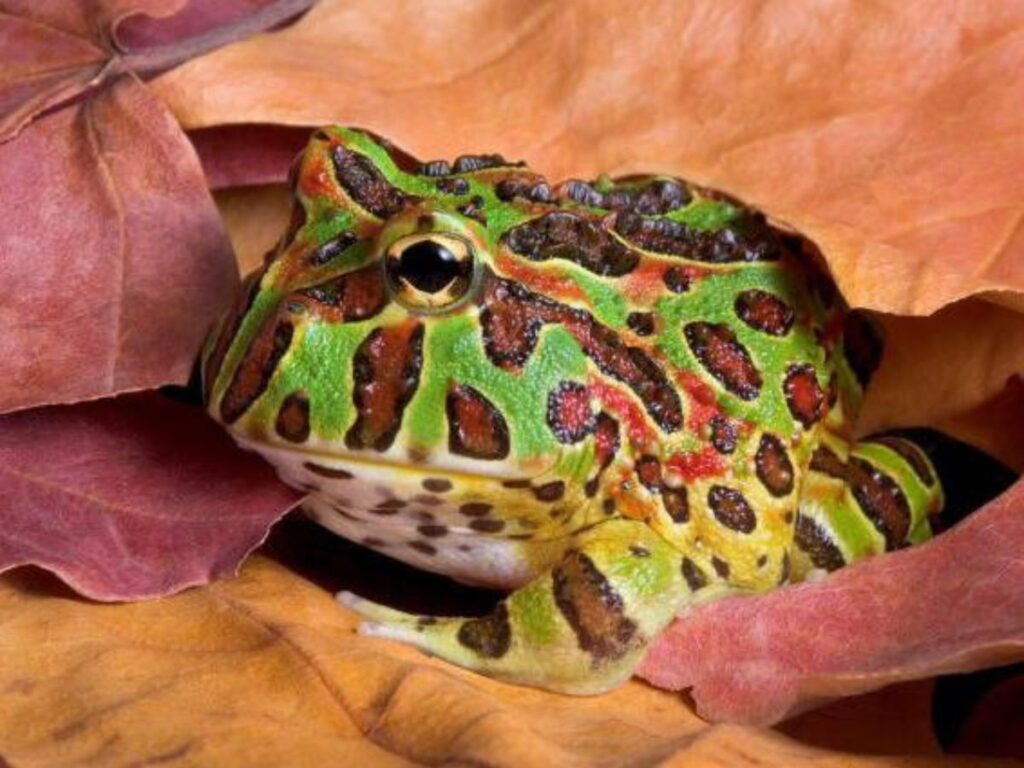🐸 DIY Pacman Frog Backgrounds for Enclosures
Customize Your Vivarium with Safe and Stunning Backdrops
DIY Pacman Frog Backgrounds - At a Glance
DIY backgrounds add depth, aesthetics, and utility to your Pacman frog’s enclosure. Use foam, silicone, and natural materials like cork or coco fiber to create safe, frog-friendly designs. These backdrops can improve humidity retention and turn your tank into a jungle-like bioactive habitat.
Pacman frogs may not climb walls, but they certainly benefit from a well-designed, functional enclosure. A DIY background enhances both the look and environment of your vivarium, offering increased humidity control, insulation, and aesthetic appeal.
In this guide, you’ll learn:
Benefits of a custom enclosure background
The best materials to use
Step-by-step build instructions
Safety tips for amphibians
Easy design ideas for beginners
Why Add a Background to a Pacman Frog Tank?
Although Pacman frogs are terrestrial, a background offers key perks
| Benefit | Description |
|---|---|
| Aesthetic upgrade | Turns a plain tank into a realistic vivarium |
| Humidity retention | Helps insulate and hold moisture |
| Mounting space | Great for attaching plants, moss, or décor |
| Naturalistic environment | Supports enrichment and bioactive setups |
Best Materials for DIY Frog Tank Backgrounds

Choose materials that are:
Amphibian-safe (non-toxic after curing)
Humidity-resistant
Lightweight but durable
Top Materials:
Great Stuff Pond & Stone Foam (expands and shapes easily)
Silicone (100% pure, aquarium-safe)
Cork bark or coco panels
Peat moss, sphagnum moss, coco fiber
Mesh or egg crate for base support
Tools You’ll Need:
Utility knife or foam cutter
Gloves and mask (when working with foam)
Caulk gun for silicone
Spray bottle (for cleanup and shaping)
Step-by-Step: How to Make a DIY Pacman Frog Background
Step 1: Plan Your Layout
Sketch the background or plan it directly on the glass. Leave room at the base for burrowing zones.
Tip: Use removable painter’s tape to block off the viewing areas.
Step 2: Apply Foam Base
Spray Great Stuff Pond & Stone Foam in your desired shape. Build ledges, pockets, or bumps.
Let cure for 24 hours
Carve into shape using a utility knife
Step 3: Add Texture and Attach Elements
Use silicone to:
Coat the foam
Press in moss, coco fiber, or bark for a natural finish
Embed cork rounds or planters for later planting
Step 4: Cure and Dry
Let the entire background cure for at least 48 hours in a well-ventilated area. Once odor-free, it’s safe for installation.
Step 5: Install the Background
Place inside the tank using silicone or wedges to secure. Be sure:
No loose pieces can fall
There’s still plenty of space for the frog’s floor zone
Your background doesn’t block the heat mat area
Optional Features to Include
Plant holders: Use small plant pots or cut-out foam shelves
Waterfall channels (for advanced setups)
Springtail/microfauna hideouts
Fake vines for tropical aesthetics
Safety and Maintenance Tips
| Task | Frequency/Advice |
|---|---|
| Inspect for mold or peeling | Monthly |
| Rinse with dechlorinated water | During tank cleanings |
| Avoid harsh scrubbing | Damages texture or silicone |
| Never use scented sprays | Toxic to amphibians |
Final Thoughts
A DIY background doesn’t just make your Pacman frog’s enclosure look great—it also boosts humidity, supports natural décor, and transforms your terrarium into a lush, immersive habitat. With a little effort, you can build something functional, frog-safe, and truly one of a kind.
FAQ: DIY Frog Backgrounds
Q: Can Pacman frogs climb a vertical background?
A: No—they’re not climbers. The background is mostly for humidity and décor.
Q: Is expanding foam safe for frogs?
A: Yes, but only after curing fully and sealing with silicone and substrate.
Q: Can I glue live moss to the wall?
A: Yes! Just be sure it’s pesticide-free and misted often to keep it alive.
